All the solutions provided in McGraw Hill My Math Grade 5 Answer Key PDF Chapter 12 Lesson 7 Three Dimensional Figures will give you a clear idea of the concepts.
McGraw-Hill My Math Grade 5 Answer Key Chapter 12 Lesson 7 Three Dimensional Figures
A three-dimensional figure has length, width, and height.

Math in My World
Describe the faces, edges, and vertices of the figure outlined on the luggage bag. Then identify the shape of the figure.
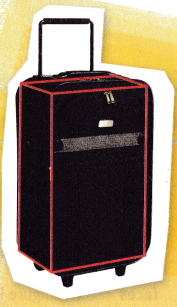
faces: The figure has ______________ faces. Each face appears to be a rectangle.
edges: There are _____________ edges. The opposite edges are parallel and congruent.
vertices: The figure has _____________ vertices.
Prisms are three-dimensional figures. A prism has at least three faces that are rectangles. The top and bottom faces, called the bases, are congruent parallel polygons.
The figure above is a rectangular prism. In a rectangular prism, the bases are congruent rectangles. A rectangular prism has six rectangular faces, twelve edges, and eight vertices.
Answer:
The shape of the bag is a rectangular prism.
– The figure has 6 faces. Each face appears to be a rectangle.
– There are 12 edges.
– The figure has 8 vertices.
Talk Math
Describe the differences between a triangular prism and a rectangular prism.
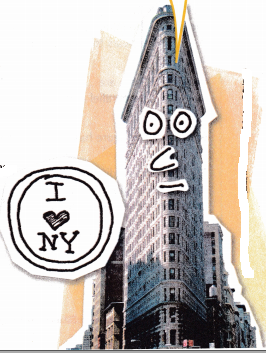
Answer:
– A triangular prism has two bases and four faces, while a rectangular prism has one base and two faces.
Guided Practice
Question 1.
Describe the faces, edges, and vertices of the three-dimensional figure. Then identity it.
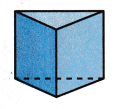
faces:
This figure has _____________ faces. The ___________ bases are congruent and parallel. The other faces are _____________.
edges:
There are _____________ edges. The edges that form the vertical sides of the rectangles are parallel and _____________.
vertices:
This figure has ____________ vertices.
The figure is a _____________.
Answer:
The above-given shape:
– The figure has 5 faces. The triangular bases are congruent and parallel. The other faces are rectangles.
– There are 9 edges. The edges that form the vertical sides of the rectangles are parallel and congruent.
– The figure has 6 vertices.
– From the above information, we can say that the figure is a triangular prism.
Independent Practice
Describe the faces, edges, and vertices of each three-dimensional figure. Then identify it.
Question 2.
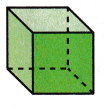
Answer:
From the above-given figure count the faces, edges, and vertices.
– The figure has 6 faces. It is one of the simplest shapes in three-dimensional space. All six faces of a figure are squares, a two-dimensional shape.
– The figure has 12 edges.
– The figure has 8 vertices.
– All the faces are shaped as a square hence the length, breadth, and height are the same.
– The opposite planes or faces in a figure are parallel to each other.
– The opposite edges in a figure are parallel to each other.
– Each of the faces in a figure meets the other four faces.
– Each of the vertices in a figure meets the three faces and three edges.
– From the above information, we can say that the above-given figure is the cube.
Question 3.
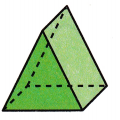
Answer:
– A figure has 5 faces, 9 edges, and 6 vertices.
– It is a polyhedron with 3 rectangular faces and 2 triangular faces.
– The two triangular bases are congruent to each other.
– From the above-given information, we can say that the figure is a triangular prism.
Question 4.
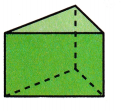
Answer: Triangular prism
Explanation:
– It has 5 faces
– It has 6 edges.
– The vertices of the triangular prism are the vertices of the two triangular bases connected by lines that form rectangles. Its edges include 6 edges of two triangular bases (3 + 3) and 3 sides that join the bases.
Question 5.

Answer:
– It has 6 faces
– It has 12 edges.
– It has 8 vertices.
– It has 3 dimensions which are length, width, and height.
– The opposite faces of a given figure are congruent.
– From the above information, we can say that the figure is a rectangular prism.
Question 6.
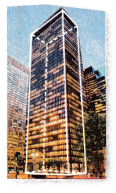
Answer:
– It has 6 faces
– It has 12 edges.
– It has 8 vertices.
– It has 3 dimensions which are length, width, and height.
– The opposite faces of a given figure are congruent.
– From the above information, we can say that the figure is a rectangular prism.
Question 7.
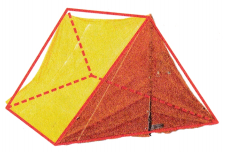
Answer:
– A figure has 5 faces, 9 edges, and 6 vertices.
– It is a polyhedron with 3 rectangular faces and 2 triangular faces.
– The two triangular bases are congruent to each other.
– From the above-given information, we can say that the figure is a triangular prism.
Problem Solving
Question 8.
Mathematical PRACTICE Identify Structure The Metropolitan Correction Center in Chicago is in the shape of a triangular prism. Circle the two-dimensional figures that make up the faces of the prism.
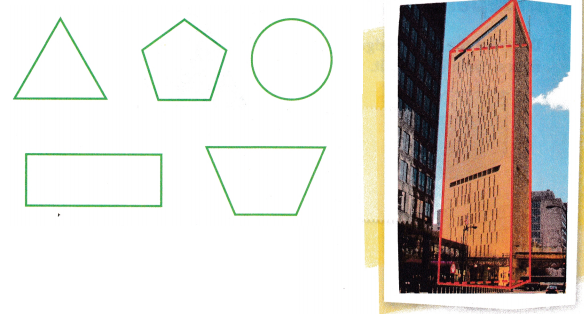
Answer:
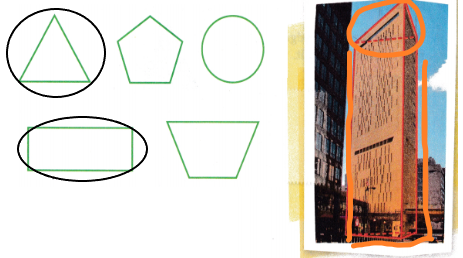
– A triangular prism has 5 faces, 9 edges, and 6 vertices.
– It is a polyhedron with 3 rectangular faces and 2 triangular faces.
– The two triangular bases are congruent to each other.
– Any cross-section of a triangular prism is in the shape of a triangle.
Question 9.
Describe the number of vertices and edges in an unopened cereal box. Identify the shape of the box.
Answer:
Actually, the cereal box shape is like a rectangular prism.
For a rectangular prism:
– The number of vertices is 8
– The number of edges is 12.
HOT Problems
Question 10.
Mathematical PRACTICE Model Math What figure is formed if only the height of a cube is Increased? Draw the figure to support your answer.
Answer:
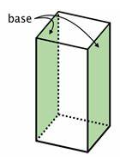
The figure formed is a rectangular prism.
Question 11.
Building on the Essential Question Why is it important to know the different properties of three-dimensional figures?
Answer:
It is important to know the different properties of three-dimensional figures because they preoccupy space and are applied in our day-to-day life.
McGraw Hill My Math Grade 5 Chapter 12 Lesson 7 My Homework Answer Key
Practice
Describe the faces, edges, and vertices of each three-dimensional figure. Then identify it.
Question 1.
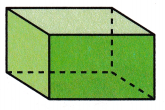
Answer:
– It has 6 faces
– It has 12 edges.
– It has 8 vertices.
– It has 3 dimensions which are length, width, and height.
– The opposite faces of a given figure are congruent.
– From the above information, we can say that the figure is a rectangular prism.
Question 2.
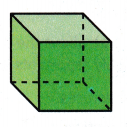
Answer:
From the above-given figure count the faces, edges, and vertices.
– The figure has 6 faces. A figure is one of the simplest shapes in three-dimensional space. All six faces of a figure are squares, a two-dimensional shape.
– The figure has 12 edges.
– The figure has 8 vertices.
– All the faces are shaped as a square hence the length, breadth, and height are the same.
– The opposite planes or faces in a figure are parallel to each other.
– The opposite edges in a figure are parallel to each other.
– Each of the faces in a figure meets the other four faces.
– Each of the vertices in a figure meets the three faces and three edges.
– From the above information, we can say that the above-given figure is the cube.
Problem Solving
Question 3.
Rhett made a simple drawing of his house. It is a three-dimensional figure with four faces that are rectangular and two that are square. What kind of figure is it?
Answer:
The four faces are rectangular and two are square a rectangular prism.

Therefore, the figure is a rectangular prism.
Question 4.
A toy box has 6 faces that are squares. There are 12 edges and 8 vertices. Identify the shape of the toy box.
Answer:
The above-given:

the number of faces that are squares = 6
The number of edges = 12
The number of vertices = 8
From the above-given information, we can say that the toy box is a cube.
Question 5.
Mathematical PRACTICE Make Sense of Problems Gabriel is playing a board game. When it is his turn, he tosses a three-dimensional figure that has 6 square faces. What kind of figure is it? How many edges and vertices does it have?
Answer:
– The figure has 6 faces. A figure is one of the simplest shapes in three-dimensional space. All six faces of a figure are squares, a two-dimensional shape.
– The figure has 12 edges.
– The figure has 8 vertices.
– From the above information, we can say that the above-given figure is the cube.
Vocabulary Check
Fill in the blank with the correct term or number to complete the sentence.
Question 6.
A vertex is a point where ___________ or more edges meet.
Answer: two
Vertex is a point on a polygon where the sides or edges of the object meet or where two rays or line segments meet.
Test Practice
Question 7.
Which statement is true about the three-dimensional figure that most closely represents the slice of pie?
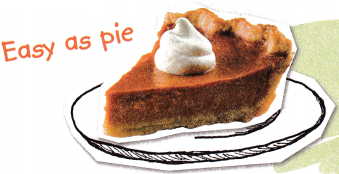
(A) The figure has 4 vertices.
(B) The figure has 6 vertices.
(C) The figure has 8 vertices.
(D) The figure has 9 vertices.
Answer: Option B is the correct answer.

The slice of pie looks like a triangular prism. In the triangular prism, the number of vertices is 6.
A triangular prism is a 3D shape with two identical faces in the shape of a triangle connected by three rectangular faces. The rectangular faces are referred to as the lateral faces, while the triangular faces are called bases. The bases are also called the top and the bottom (faces) of the prism.